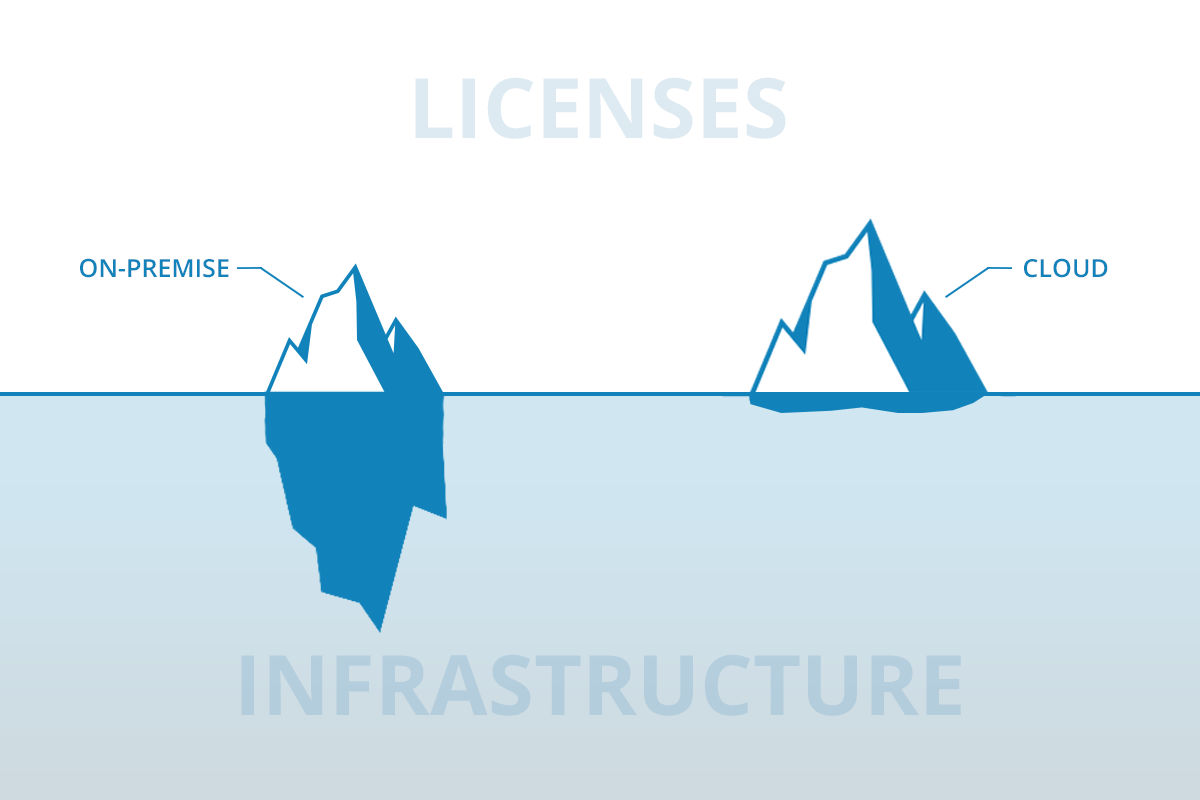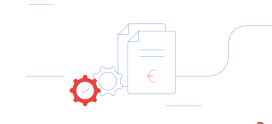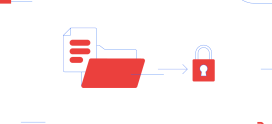26. July 2018
Cloud or On-Premise? Which one should I choose for my DMS?

Document Management Systems (DMS) and Enterprise Content Management (ECM) solutions are proven to be extremely efficient in eliminating file chaos, piles of paper, tedious searches and obscure, manual processes. ECM software is as much a part of a company’s software infrastructure as merchandise management or accounting software, regardless of whether it is Cloud or On-Premise.
Demand for ECM and DMS solutions is growing, especially in the context of the strongly increasing legal pressure to comply with GDPR, and in the context of the associated entrepreneurial risk. It is no longer a question of “whether” you want to implement a DMS or ECM, but how you want to operate this solution. In the Cloud or In-House (On-Premise), or even a mix of the two (hybrid, i.e. your server infrastructure in an external data centre).
As a developer and supplier of the award-winning document management software AMAGNO Digital Workplace, we offer On-Premise, hybrid and Cloud at the same time, with the same suite of functions. This article should help you take closer look at the advantages and disadvantages of Cloud and On-Premise in the context of ECM / DMS, to help you make a choice.
USABILITY READINESS AND START-UP
How quickly is a solution ready for use?
On-Premise
Installations on an in-house server within a company or at a hosting provider require extensive planning to build up the following features: hardware, software, licenses, backup and security strategies. The provision of this infrastructure is the responsibility of the customer and/or their IT service provider. In medium-sized companies, setting all this up usually takes weeks to months.
Cloud
A Cloud solution is usually available immediately after the order is placed. All features needed for the operation of your own server, such as hardware, software, etc., are not relevant, since these are the responsibility of the Cloud provider.
ACCESSIBILITY AND AVAILABILITY
Your previous file system and your paper files were always accessible. The same standards apply to a digital DMS / ECM.
On-Premise
The operation of an On-Premise solution in the company enables the best performance and constant availability of data, since you are not so dependent on internet performance. You determine your own System Maintenance, i.e. you are in control of your downtime.
Cloud
In contrast to an On-Premise solution, sometimes there are millions of users trying to connect to Cloud infrastructure, which can sometimes lead to connectivity issues. The Cloud is also vulnerable to Internet infrastructure outages, as with any network whether internal or external.
Hardware, Software, Licences
Which prerequisites do the solutions have to meet for use in the company?
On-Premise
On-Premise software is installed on powerful and redundant server systems. This includes the actual hardware (server, backup, failover, etc.) as well as licenses for the operating systems, database software, backup software, monitoring solutions, firewall and protection software. The hardware installation must be planned upfront for many years of operation. Furthermore, the hardware and software must be regularly updated. Operating systems, e.g. Windows, have only limited life cycle, e.g. for updates.
Cloud
The Cloud provider is completely responsible for the entire IT infrastructure and includes these costs in the monthly fees. This way, the customer automatically invests in the future security of his ECM / DMS solution.
SYSTEM ADMINISTRATION
Operating a business software and ensuring availability, stability and security, whether for On-Premise or Cloud, requires well-trained personnel.
On-Premise
At least one very well-trained system administrator is needed to operate and maintain server infrastructure, update hardware and software, carefully monitor system parameters and secure the system. In addition, these services need to be calculated in the final fee. The advantage of On-Premise is that system administrator can implement their own standards on backup, administration, security etc.
Cloud
The provider of a Cloud solution always has the well-trained personnel that ensures the stability, security and availability of the solution. The costs are included in the monthly fees and are spread over many users. However, Cloud customers must use the existing default system configuration.
STORAGE SPACE
It is digital documents of all kinds that take up particularly large parts of storage space. This is where On-Premise shows its advantages.
On-Premise
By operating your own server infrastructure, you can often expand the necessary storage space at low cost. This is often expensive for Cloud solutions, especially when the company uses its On-Premise solution to rent external, low-cost, secure data storage, to reliably store large volumes of data (hybrid between On-Premise and Cloud).
Cloud
The Cloud scales up automatically. If more space is needed, it is almost immediately available. As a Cloud customer, you are only concerned with the financial aspect of expanding storage. This can be an important point of view when calculating total costs for large volumes of data.
SECURITY
The security of data is the highest priority of a company and, especially given our experience in Germany so far, the main reason given by companies who wish to implement an On-Premise solution. A security strategy with the necessary tools against attacks or system failures is very important.
On-Premise
The security measures for your entire system against failure, manipulation or external assaults must be carefully planned by specialists. This is very time-consuming and expensive. The advantage of On-Premise is that customers have the security completely in their own hands and thus meet their own special requirements. For the Cloud, you have to use what is offered. But remember: Your servers are often exposed to all risks of external access in a same way as a Cloud solution.
Cloud
The situation is not ideal: A publicly visible Cloud is regularly attacked. It testifies to a very good quality and technical planning of the ECM / DMS provider as well as a very good planning of the security strategy if the Cloud provider successfully defends itself against failures and attacks. For this reason, Cloud providers plan their security strategy very intensively at all levels. Inside and outside the company. Cloud providers are regularly tested in order to meet the high security requirements of their customers.
LEGAL SECURITY
Depending on business and industry, and on the use of the ECM/DMS solution, legal standards must be maintained on national as well as on international level.
On-Premise
When planning an ECM / DMS solution, it is essential to know the legal framework and to analyse the solution accordingly at all levels. To achieve legal security, it is often necessary that experts document your infrastructure, processes and procedures. Ideally, you should select a software provider for ECM / DMS that already offers a basis by providing software certificates (which does not release those in charge from their responsibility).
Cloud
The Cloud solution customers come from a wide variety of industries. It is therefore essential for a Cloud provider to create a suitable platform for wide-ranging achievement of the most relevant legal framework conditions. Examples are GDPR, ISO, QM, FDA, DoD. Cloud solutions per se have a broad and secure foundation for many requirements. The costs are often charged to the customer as a lump sum over the monthly fees. As a rule, Cloud providers provide software certificates and proofs of this. However, even here it does not release the customer from the obligation to produce procedural documentation for his company, together with an accountant.
INTEGRATIONS AND CONNECTIONS
ECM/DMS are not isolated solutions. They integrate with other applications, such as ERP, CRM, financial accounting etc.
On-Premise
The operators of an On-Premise solution have all possible alternatives to integrate their DMS / ECM solution with other solutions according to their own ideas. This is especially helpful with very complex connections that require high and individual administration of the in-house IT infrastructure.
Cloud
To connect the most relevant systems, ECM providers in the Cloud usually include standardized interfaces in their package. Modern ECM / DMS systems also offer an open Restful API for implementing in-house connections to the Cloud from outside.
ESTIMATION OF OVERALL COSTS
Depending on the type of use of Cloud or On-Premise, various cost factors must be considered when operating an ECM / DMS solution. A fixed period of use of at least 10 years is recommended. This corresponds to the turnaround of documents which corresponds to a typical corporate and/or legal retention period.

The following comparison shows that you should never consider only the license prices of the DMS / ECM solution when making an investment decision, but also all additional costs, such as the costs for operating the infrastructure of an On-Premise solution. We do not list services for the ECM solution here, as there are large differences between the providers.
On-Premise
Following costs should be considered: :
- High-quality, upgradeable hardware that meets the performance, security and data volume requirements for the next 10 years
- Security systems (backup hardware / software, security solutions (firewall, etc.))
- Server software licenses (server operating systems including updates, database software including updates, security certificates (e.g. SSL))
- System administrator (personnel costs or service provider)
- For On-Premise usually one-time license costs for server and clients of the ECM / DMS, modules, and, if necessary, individual development
- Update and support contracts of the ECM / DMS. Usually 18-25% of one-time investment costs
- Documentation and certification of legal requirements, e.g. accountants for procedural documentation according to GDPR
Cloud
All costs for operating the Cloud solution are usually calculated on a monthly fee per user, in combination with storage space.
However, additional services should also be mentioned, e.g. when an accountant needs to create procedural documentation within the framework of the GDPR. This is a cost factor that is also found in paper-driven companies.
Anyway: Any invoice will always be in favour of either On-Premise or Cloud. To reach your company’s goals and have true effects, you should decide not based on costs, but on professional and technical requirements. The benefits that your employees get from an enterprise content management software, in terms of security and time savings, are many times greater than any pure cost consideration.
CONCLUSION
AN ECM WORKS
Overall, only 11% of medium-sized companies are prepared for comprehensive digitisation of office work, while large companies account for 81%. The medium-sized companies are still far behind in the digitisation of office work.
For 90% of the companies using ECM, this has a noticeably positive effect on document management.
For this reason, 25% of the companies surveyed in another Bitkom study plan to implement an ECM solution soon, in order to increase competitiveness and move the company into the digital present.
ON-PREMISE OR CLOUD?
The companies that put their trust in the Cloud do not question its use. The Cloud is easily available, scalable, eliminates expensive internal administration and usually offers a clear monthly pricing model for long-term financial calculation. Learn more about AMAGNO Business Cloud.
For companies that want to keep their IT structure in their own hands with On-Premise, including the associated high operating and personnel costs, the On-Premise solution is the right answer. It enables a more flexible connection to internal applications and offers the best in-house performance. Learn more about AMAGNO On Premise.
What is your experience with the respective systems and what motivated you to decide for On-Premise or Cloud?
translated by Salvatore Coppola-Finegan


